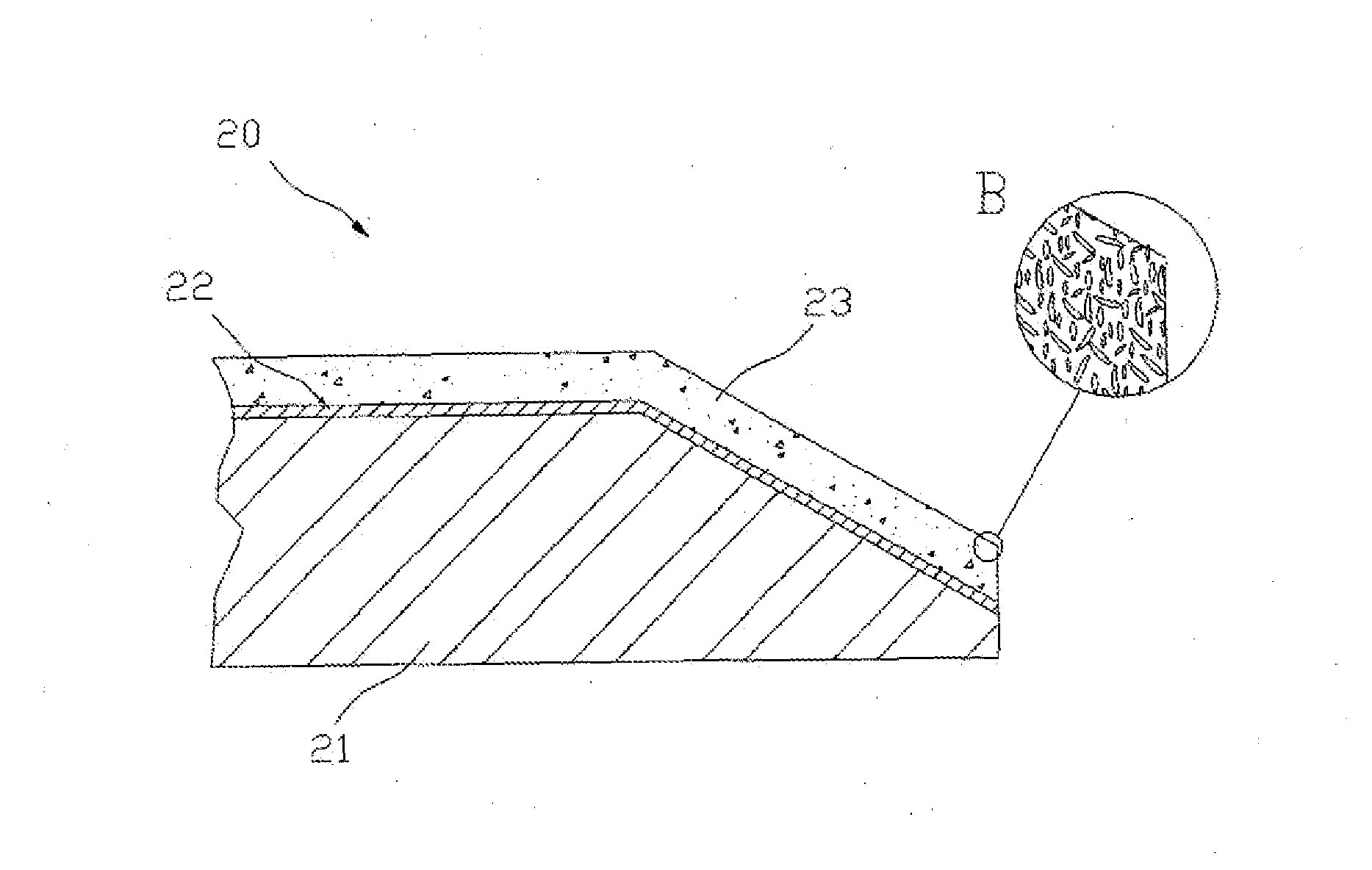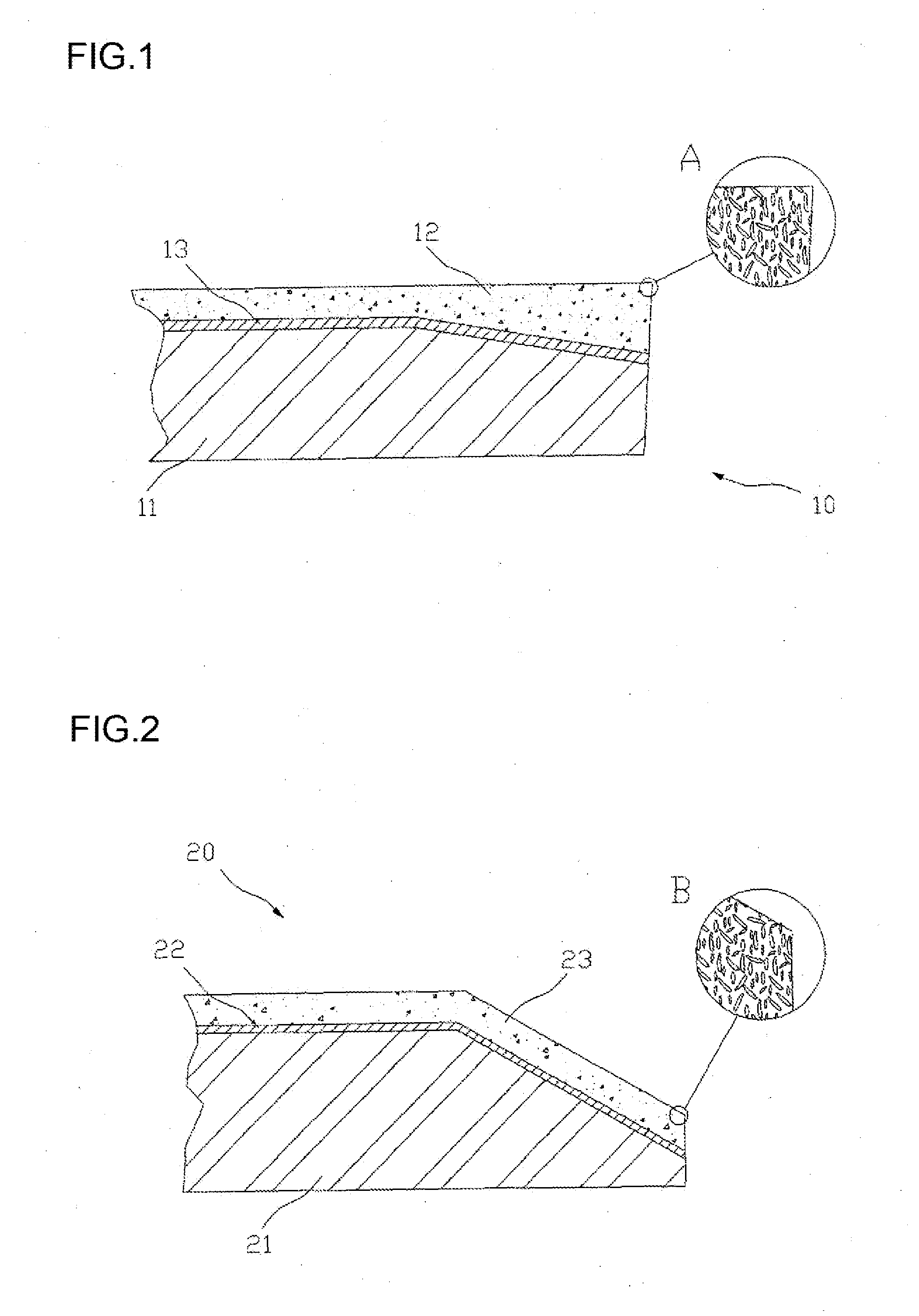Impregnated blade coating
a technology of impregnated blades and coatings, applied in the field of impregnated blades, can solve the problems of reducing the quality of paper produced, high demands on mechanical stability and wear resistance of blades, etc., and achieves excellent dirt repellent effect, good anti-sticking properties, and improved sliding or dirt repellent properties of contact surfaces.
- Summary
- Abstract
- Description
- Claims
- Application Information
AI Technical Summary
Benefits of technology
Problems solved by technology
Method used
Image
Examples
Embodiment Construction
[0021]Referring now to the drawings, and more particularly to FIG. 1, there is shown a cross section through the front section of creping doctor 10 which is provided with coating 12. Creping doctor 10 has a base body 11 which is formed, for example from steel, onto which coating 12 is applied. Coating 12 occupies at least that part of creping doctor 10 which comes into contact with the dryer- or Yankee cylinder and the fibrous nonwoven material of the web. As shown in FIG. 1, an intermediate layer 13 may be provided between coating 12 and base body 11 for better adhesion.
[0022]Working edge 14 with which creping doctor 10 fits closely against the dryer- or Yankee cylinder abuts to abutting surface 15 onto which the paper web impacts. Abutting surface 15 and working edge 14 are positioned at the location of the coating.
[0023]As can be seen in schematic detail A of coating 12 in the region of working edge 14, coating 12 includes two components. One coating matrix or coating support lay...
PUM
| Property | Measurement | Unit |
|---|---|---|
| median diameter | aaaaa | aaaaa |
| median diameter | aaaaa | aaaaa |
| size | aaaaa | aaaaa |
Abstract
Description
Claims
Application Information
 Login to View More
Login to View More - R&D
- Intellectual Property
- Life Sciences
- Materials
- Tech Scout
- Unparalleled Data Quality
- Higher Quality Content
- 60% Fewer Hallucinations
Browse by: Latest US Patents, China's latest patents, Technical Efficacy Thesaurus, Application Domain, Technology Topic, Popular Technical Reports.
© 2025 PatSnap. All rights reserved.Legal|Privacy policy|Modern Slavery Act Transparency Statement|Sitemap|About US| Contact US: help@patsnap.com


